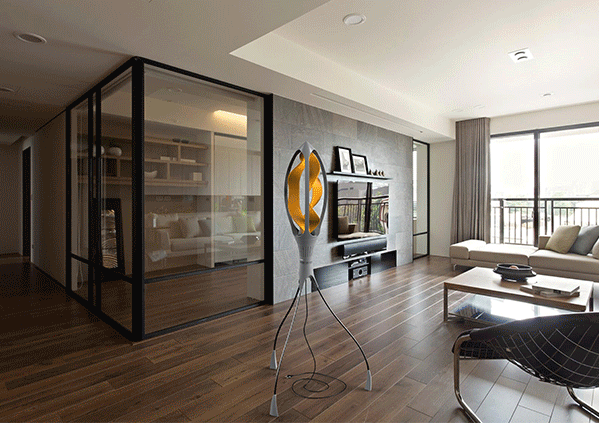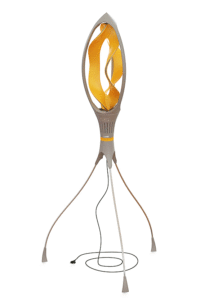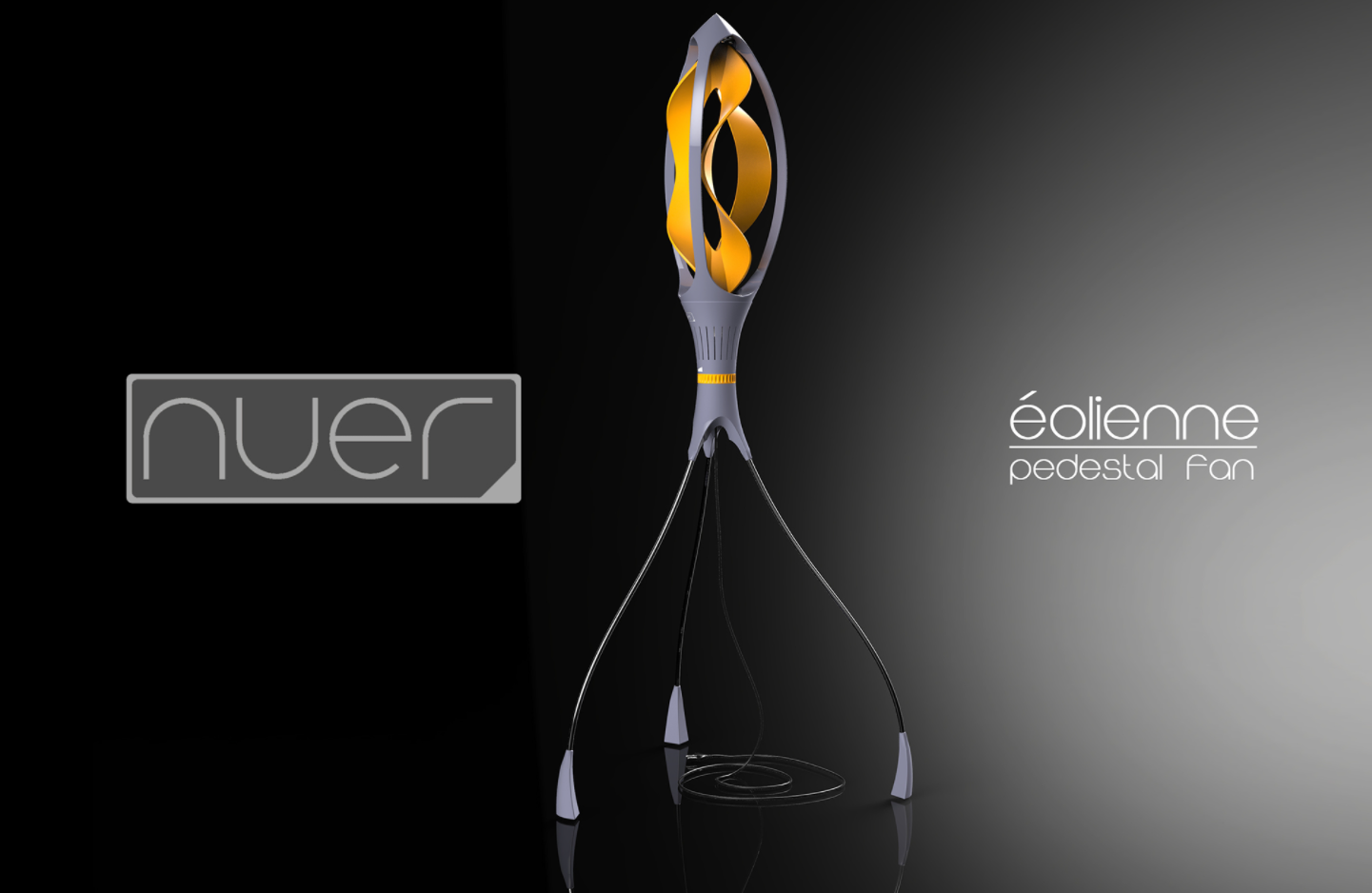NUER pedestal fan (An Interesting concept)

Éolienne (French: ‘wind turbine’) is not a wind turbine, but rather a wind generator. The goal of this project was to completely redesign the pedestal fan. Looking at what the future may hold for cost effective household cooling solutions, and how the User, Environment and Product relationship can be enhanced; whilst inspiring creativity and simplifying interaction.
Nuer is a hypothetical brand developed for this project. The brief for our final exam project of 2014 was to design a free-standing household fan. With considerations for noise, interaction, safety, assembly, storage and aesthetic quality. We also had to develop a brand for our product that would speak to the nature and values of our design direction. I decided to design a fan that would circulate air more effectively throughout the space, whilst simplifying the interaction required by the user and introducing a sculptural aspect to make the product more valuable than a purely functional item.
The parameters in consideration were as follows
The style guide I developed for the Nuer fan was based on precedent from existing sculptural fans, natural aero-dynamics, wind-turbine design, modern manufacture and natural forms.
I used wind dispersal seeds as inspiration for developing an unconventional blade that would churn, rather than chop, the air. I also wanted to create a smooth, sleek and slender form that would communicate aerodynamics. I looked at the shape of a squid, as it has a distinctly curvilinear and unbroken form. The thin tentacles were an inspiration to do thin legs and draw focus to the main mechanism.
Initially I looked at ways to include functions such as height-adjustability and wind-direction. However, as the concept was developed further and I was able to do prototype testing, these aspects fell away as unscary complications and detractions from the simplicity of the form.
After some prototyping I was able to refine the form and move on to the mechanical details of the electronics and assembly.
Further refinement was carried out through CAD. Making sure each component is manufacturable and finalising the assembly process and fasteners.
Using the engineering drawings, I produced the parts to scale and made a working prototype. I had some of the parts grown and others I modelled from foam and wood. For the repetitive parts, I made moulds of the original pattern and cast plastic and foam multiples. I used a reclaimed fan motor to drive the prototype.
Courtesy: https://www.behance.net/gallery/21163103/olienne-pedestal-fan











